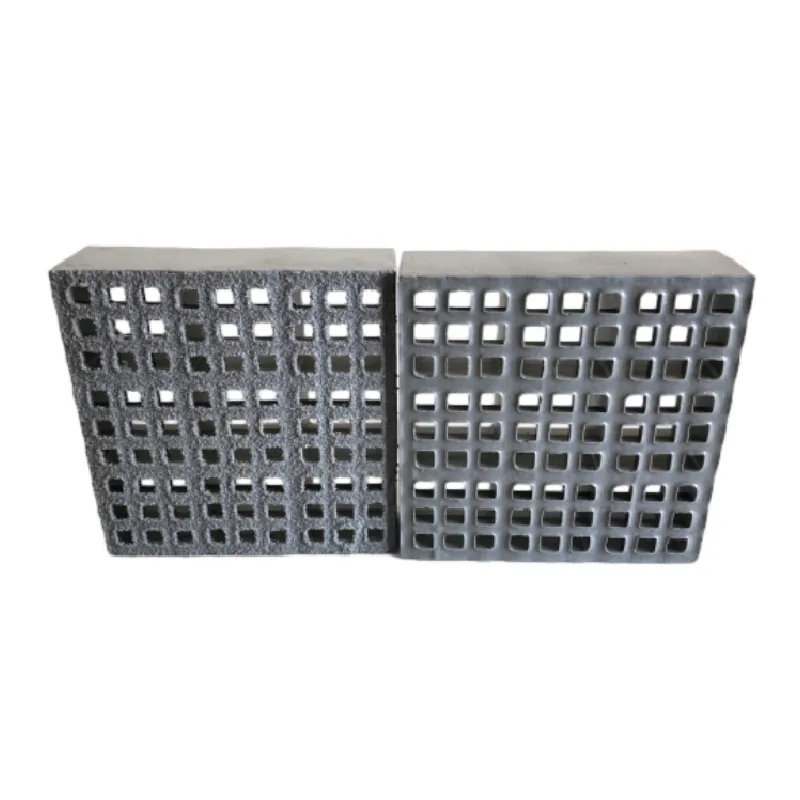loading...
- No. 9, Xingyuan South Street, Dongwaihuan Road, Zaoqiang County, Hengshui, Hebei, China
- admin@zjcomposites.com
- +86 15097380338
- Welcome to visit our website!
Best Practices for Installing FRP Grating Efficiently and Effectively
Installation of FRP Grating A Comprehensive Guide
Fiberglass Reinforced Plastic (FRP) grating has gained popularity in various industrial applications due to its lightweight nature, durability, and resistance to corrosion. Whether utilized for walkways, platforms, or drainage covers, FRP grating offers a reliable alternative to traditional materials like metal and wood. However, the successful installation of FRP grating requires careful planning and execution. This article will provide a comprehensive guide on how to properly install FRP grating to ensure optimal performance and longevity.
Step 1 Preparation and Planning
Before proceeding with the installation, it is crucial to carry out thorough preparation and planning. Assess the area where the FRP grating will be installed and measure the dimensions accurately. This includes taking into account the load requirements, as FRP grating comes in various thicknesses and load capacities. It is advisable to consult the manufacturer's specifications to choose the correct type of grating for your application.
Next, gather all necessary tools and materials. Commonly needed tools include a utility knife, saw (for cutting to size), measuring tape, drill, and safety gear such as gloves and goggles. Ensuring that you have all required components, including adhesive, anchors, and trim pieces, is critical to streamline the installation process.
Step 2 Surface Preparation
The surface on which the FRP grating will be installed must be adequately prepared to ensure a secure and stable installation. Begin by cleaning the surface of any debris, dust, or oil. If the grating is being installed over an existing surface, check for any damage or inconsistencies that may affect installation and rectify these issues.
For proper drainage and to prevent accumulation of water or debris, ensure that the underlying structure is level and has the required slope if applicable. It may also be helpful to install a moisture barrier if the grating will be exposed to significant water exposure.
Step 3 Cutting the Grating
Once the surfaces are prepared, it's time to cut the FRP grating to the desired dimensions if necessary. Using a saw designed for cutting FRP—typically a circular saw or jigsaw—will yield the best results. When cutting, always wear appropriate safety gear to protect against fiberglass splinters and dust. Ensure that you make precise cuts to avoid gaps and misalignment during installation.
frp grating installation

Step 4 Installation Process
With the grating cut to size, you can begin the installation process. If the grating is modular, it can be placed directly onto the prepared surface. For larger areas, or if the FRP grating is to be connected, start by laying out the panels without securing them to identify the best fit.
For fastening, drill appropriate holes for anchors, and select the right type of adhesive or anchoring system based on the load and environmental conditions. In most cases, a high-strength adhesive designed for FRP is recommended. Apply the adhesive as per the manufacturer's instructions and ensure that it is evenly spread for a strong bond.
When placing the grating, ensure it is properly aligned before applying pressure to set the adhesive. It is essential to maintain consistent spacing between panels for proper expansion and contraction, especially in environments subject to temperature variations.
Step 5 Final Inspection and Maintenance
Once the grating is installed, conduct a final inspection to ensure that all panels are secured properly and that there are no visible gaps. Test the strength and stability of the installation by applying weight gradually to ensure a secure load-bearing capacity.
To maintain the longevity of your FRP grating, establish a regular maintenance schedule. This includes cleaning the grating to prevent buildup of debris and ensuring that drainage systems are functioning correctly. Inspect for any signs of wear or damage periodically, and address any issues promptly to extend the service life of the material.
Conclusion
Proper installation of FRP grating not only maximizes its benefits but also enhances safety in its application. By following the steps outlined above— preparation, surface preparation, cutting, installation, and maintenance—users can ensure a successful installation that meets the demands of their specific environment. As industries continue to seek efficient and durable solutions, mastering the installation of FRP grating will undoubtedly provide a valuable skill.
-
GRP Structures: The Future of Lightweight, High-Performance EngineeringNewsJun.20,2025
-
FRP Water Tank: High-Performance Storage for Corrosive and Clean Water SystemsNewsJun.20,2025
-
FRP Square Tube: The New Industry Standard for Chemical and Structural ApplicationsNewsJun.20,2025
-
FRP Pultruded Profiles: The Ultimate Choice for Lightweight Structural StrengthNewsJun.20,2025
-
FRP Handrails: The Safer, Smarter, and Stronger Choice for Modern InfrastructureNewsJun.20,2025
-
FRP Grating: The Smart Solution for Durable, Lightweight Industrial FlooringNewsJun.20,2025
-
Why Choose a Galvanized Water Tank for Your Storage NeedsNewsMay.21,2025
